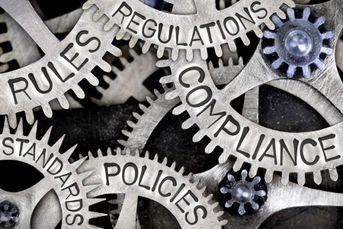DOL’s new FAQs on fiduciary rule focus on circumventing fiduciary status
The most surprising aspect of the second round of adviser FAQs is they concentrate on behaviors that will legally and appropriately circumvent fiduciary accountability.
The Department of Labor has issued a second set of answers to questions frequently asked by advisers about its new conflict of interest rule.
The document reiterates, reinforces and clarifies key concepts at a technical level through the use of examples. The most surprising aspect of these FAQs is they concentrate on behaviors by advisers that will legally and appropriately circumvent fiduciary accountability.
One question on everyone’s mind that isn’t in the FAQs, and the DOL can’t answer, is whether or not the rule will ever actually be implemented. Given that the incoming Trump administration and Republican majorities in the House and Senate are generally hostile toward the fiduciary rule, some might question why the DOL even bothered to issue this set of FAQs exactly one week before Inauguration Day.
Legislation has already been introduced in the House to delay the rule and it is widely expected that a redirected Trump-era DOL will work to delay, scale back or replace it. But the reality is regulatory action to radically change a final rule that has been in effect for more than eight months will be neither quick nor easy. Senate Democrats may be able to successfully filibuster legislative action, and it is still an open question whether advisers and companies will want to reverse direction after investing so much into compliance.
While media attention focuses on the possible demise of the rule, advisers should be (and generally are) concentrating on what they must do to comply and compete as fiduciaries. Consequently, it behooves retirement advisers to pay close attention to developments at the DOL, including the latest FAQs.
NON-FIDUCIARY BEHAVIOR
It is remarkable that this set of FAQs places such heavy emphasis on behaviors that do not involve fiduciary accountability. Seven questions (of the 35 covered in the document) are addressed in an opening section entitled “Investment Recommendations Covered Under the Rule.”
Of these seven, five pose a hypothetical situation followed by an assessment of whether the party involved would be providing fiduciary investment advice — one would and four would not. Another question asks if a fiduciary investment adviser is liable in a situation where a client acts against the adviser’s advice — the answer is no. The final question and answer in this section asserts DOL Advisory Opinion 97-15A, which allows mutual fund fees to be used to offset adviser fees without triggering a prohibited transaction, is not altered by the rule.
The remaining 28 questions are covered in four sections, all of which deal with forms of non-fiduciary communications: investment education, general communications, counterparty transactions, and platform provider activities. These sections are heavy on assurances that the rule retains certain long-standing exclusions from fiduciary accountability. Collectively, the overarching message from the questions, answers and examples provided is that an adviser is not a fiduciary in many common situations that do not involve discretionary control over client assets or an agreement to provide objective, professional advice.
Significantly, the most questions (10 of 35) are devoted to counterparty transactions with independent fiduciaries with financial expertise, commonly called the “seller’s exception.” This form of non-fiduciary communication has received relatively little industry attention and yet it offers the opportunity for firms to continue to conduct non-fiduciary counterparty transactions with “sophisticated” independent fiduciaries — principally investment professionals and those responsible for managing over $50 million in retirement plan assets. This exception could be especially attractive for brokers seeking to specialize in providing advice to large plans.
The DOL’s coverage of non-fiduciary forms of communication are frequently coupled with a warning that it can be a relatively short step away from there to fiduciary investment advice. This is most evident in the section dealing with investment education. For example, one question affirms that education crosses over into the realm of advice by selectively featuring a subset of like-kind investment options from the menu of available choices, which may be interpreted as a recommendation to choose one of those over the ones not mentioned.
Eight questions in the document pertain to clarifying the distinction between education and advice; only the seller’s exception has more.
The FAQs lend credence to the general marketplace perception that the DOL is highly supportive of technology-enhanced financial services. Whether it is to support fiduciary advice or non-fiduciary communications, the message seems to be: “You are wise to let tools do the talking for you on matters that can be reliably programmed.”
Algorithms are accurate, objective and efficient, plus always stay on script. It is better to program such things as due diligence analyses of investment alternatives and rollover options than to rely upon every member of an entire field force of advisers to get these services consistently right.
It’s also worth knowing the DOL simultaneously released a separate set of FAQs targeted to consumers. That version covers such topics as why the DOL enacted the rule, the estimated cost of conflicted advice, what the rule requires, the differences between fiduciary and non-fiduciary standards of care, common mischaracterizations of the rule, and how retirement investors can protect their savings. The DOL may be banking on consumers taking a more active role in demanding greater fiduciary accountability even if regulatory pressure on advisers dies down under the new administration.
Blaine F. Aikin is executive chairman of fi360 Inc.
Learn more about reprints and licensing for this article.







